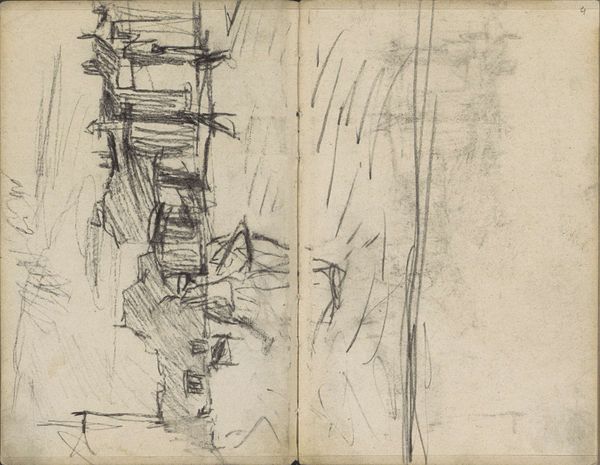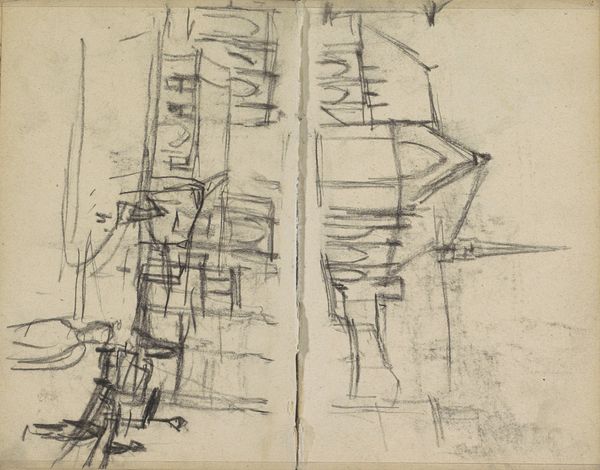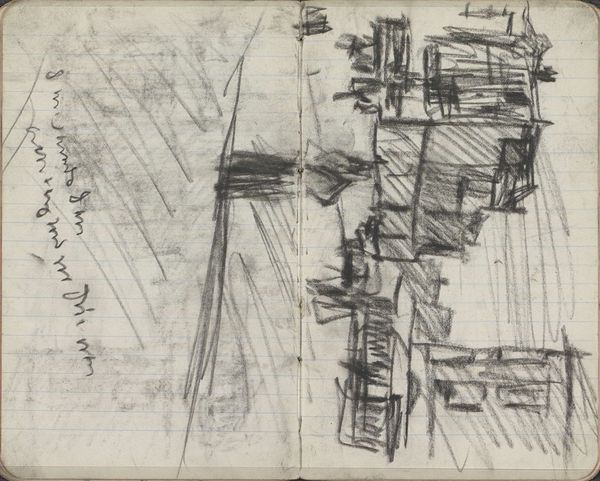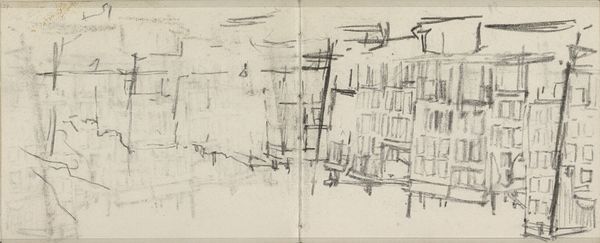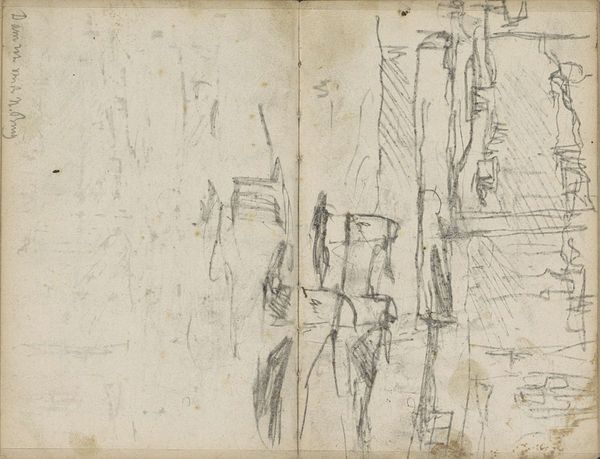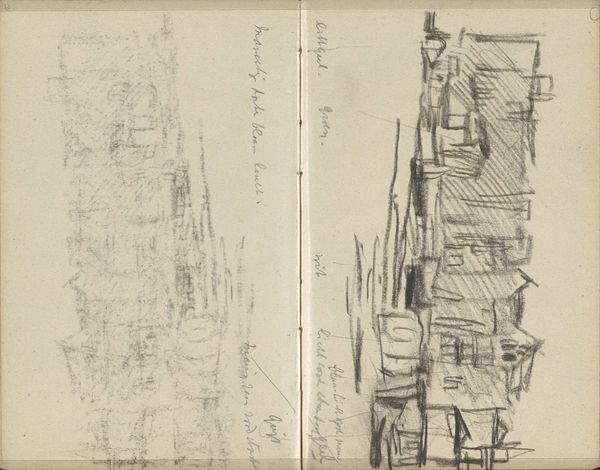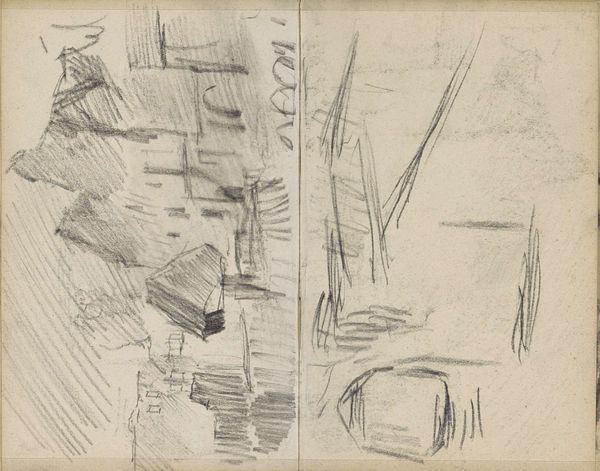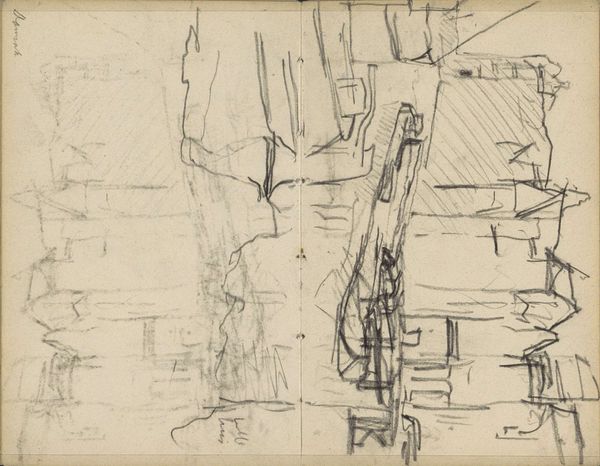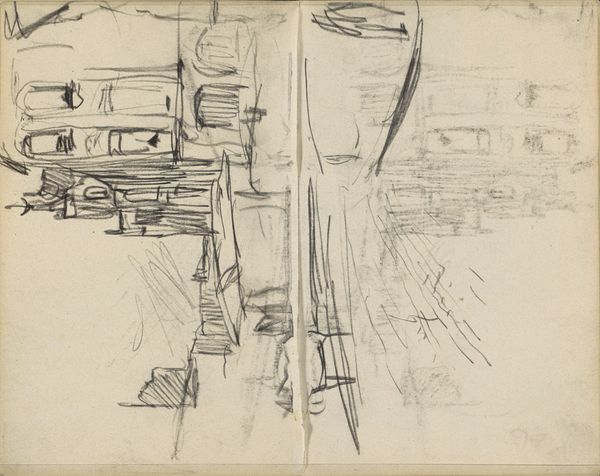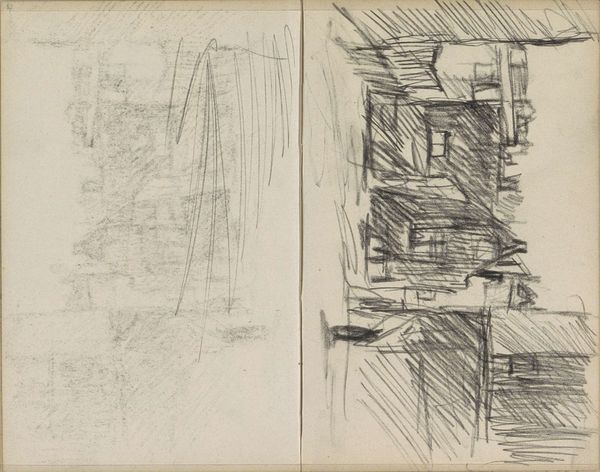
Gezicht op het Damrak met de Oude Kerk te Amsterdam 1907 - 1909
0:00
0:00
Copyright: Rijks Museum: Open Domain
Curator: Immediately striking! There’s such raw immediacy to the texture. It feels like the artist was trying to capture a fleeting moment. Editor: Indeed! What we're looking at here is George Hendrik Breitner’s "Gezicht op het Damrak met de Oude Kerk te Amsterdam," a graphite drawing created sometime between 1907 and 1909. It’s part of the Rijksmuseum's collection. Curator: It’s more than a simple cityscape; Breitner masterfully uses line and form. Look at how the varying weight of the lines articulates depth, constructing buildings from the left that progressively fall off to almost nothing in the right page spread, implying spatial recession. The almost frenetic mark-making… it's expressive in its own right. Editor: Breitner was known for documenting Amsterdam life, capturing the gritty realities of a rapidly changing city. The immediacy of drawing aligns perfectly with the Impressionist goal of portraying momentary perceptions and modern experience. But what also fascinates me is thinking about what this drawing was made for and what role it fulfilled; Was it meant for public consumption? Was it part of an illustrative study? Or solely a work of pleasure or habit? Curator: Right, we might speculate. Consider the drawing’s orientation for a start: by the paper format being effectively sideways it implies some practical rationale over aesthetic value: ease for sketching in the city, for instance. However, as a drawing, the emphasis is firmly on process and materiality, isn’t it? Graphite is such a wonderfully versatile medium. Breitner pushes its capabilities, obtaining a range of tones and textural variation. Editor: And the quick execution lends it an air of authenticity and accessibility. What Breitner did, as other Dutch Impressionists before him, was offer glimpses of everyday life which many citizens had no hope of experiencing—or chose not to acknowledge because of their political views. The city became a popular place and therefore, a place that needed to be depicted. Curator: Precisely. We’re invited to observe this scene unfurl not only with, but because of Breitner's vision. And despite the lack of overt detail, his skillful command of materials renders the composition strikingly coherent. Editor: I find myself considering this city of Amsterdam on the verge of change at the turn of the century. An exciting image. Curator: Yes, one defined as much by Breitner’s interpretation as by its intrinsic structures.
Comments
No comments
Be the first to comment and join the conversation on the ultimate creative platform.
